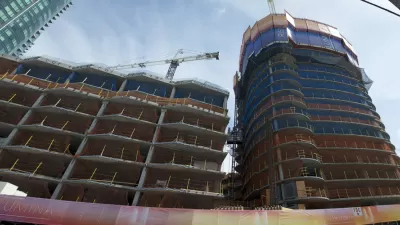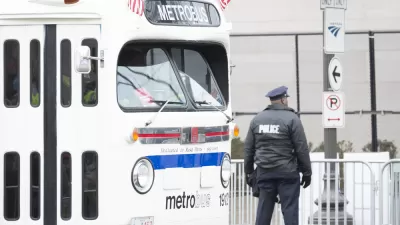Preserving historic buildings and existing affordable housing stock has the potential to ease America’s dire affordable housing crisis and promote equity, inclusion, and justice.
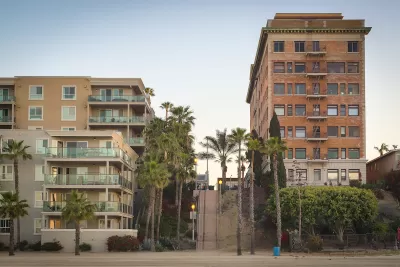
In a time of intense polarization, Americans are at odds on policy issues critical to the greater good. Think climate resilience, education, healthcare, public safety, and more. But one issue that most U.S. residents do agree on is America has too few affordable homes—especially low-cost rentals and entry-level starter homes as the New York Times reported this past March. That same week, Time magazine pointed out our nation has a full-fledged housing crisis —a crisis that continues to grow more serious every day.
The numbers show that affordability woes apply to renters and buyers alike. In 2023, rental rates increased by 30 percent or more in some cities. Harvard’s Joint Center for Housing Studies found that a record 12.1 million renter households, which amounts to about a quarter of all renters, spend more than half their income on housing—way more than the accepted standard of 30 percent. And rising home prices pushed ownership out of reach, especially for first-time buyers who needed 13 percent more income to afford them as home prices, when adjusted for inflation, rose about 60 percent over the past decade. To purchase a median priced home today, which costs nearly $413,000, it’s necessary to earn roughly $114,000—35 percent more than the typical household makes, Redfin’s March 2024 analysis of current housing data concluded.
The search for affordable housing is most dire for low-income renters
Because of the nation’s shortage of 7.3 million affordable rental homes, low-income renters are most at risk, the National Low Income Housing Coalition’s March 2024 Gap Report concluded. No state has an adequate supply of affordable rental housing — a situation that impacts every community and requires immediate intervention considering the negative health outcomes linked to housing insecurity. The situation is so dire that a coalition of 22 of the nation’s most significant housing providers sent a letter to President Biden and Congress on April 29 demanding urgent action to remediate our housing affordability crisis.
Among their top requests, they asked policymakers at all levels of government to “resist pressure to take actions that while well-intended, unnecessarily complicate the provision of housing and do nothing to address the underlying supply shortage. Additional complexity will not help households that are struggling to find affordable housing and could, in fact, discourage much-needed private-market investment in new housing construction.”
With the federal government mired in partisan gridlock, cities and states must experiment with many solutions to create more affordable housing. Currently, that is not easy given today’s tough financing environment and high construction costs. While the housing providers mentioned above call for using a combination of incentive-based programs, streamlined regulatory burdens, and innovative solutions, in truth most of the efforts it will take to solve American’s current housing crisis are most likely to be based locally, in cities and states, as noted in the New York Times this past March.
Preservation can increase our affordable housing supply
In fact, viable and innovative solutions exist by mining the resources we already have — namely, existing structures. Many types of buildings can be adapted to affordable housing in efforts that can require lower financing costs, less material usage, and shorter time frames that new construction requires. Adapting existing buildings that were originally designed for another use to become housing increases the overall supply. Our oversupply of older commercial, institutional and industrial buildings, especially commercial, is a housing opportunity.
Reusing existing buildings offers other significant advantages as well. This model reuses existing infrastructure, thereby cutting down on the time and cost for municipal approvals and permitting. The construction process can begin and end more quickly than new construction.
This idea comes out of a paradigm shift that is currently taking place in the historic preservation field as its practitioners and community advocates examine the field’s prevailing perspective and practices to ensure it becomes inclusive, equitable, and aligned with larger community goals.
Historic buildings of all types can be successful housing conversions: schools, warehouses, office buildings, storefront retail, sacred places, medical facilities, fraternal buildings, hotels, and more. A building’s original use is often obsolete because of changing demographic, economic, or social circumstances, leaving an underperforming, unmaintained and/or vacant building. Los Angeles offers a notable example of this strategy. A groundbreaking 1999 Adaptive Reuse Ordinance has helped create 46,000 housing units downtown and in its surrounding neighborhoods. More recently, a 2022 RAND Corporation study on Los Angeles County’s critical housing shortage found that adaptive reuse could provide 9 – 14 percent of the county’s next eight years of housing need.
Preservation of existing public housing is vital
We cannot overlook the important role that America’s public housing plays in providing affordable homes. There are almost 930,000 public housing units in the United States housing over 1.7 million people. These are government-built affordable rental apartments originally intended for residents making 80 percent or less of area median income. According to the 1991 American Housing Survey, 39 percent of all public housing units were built after 1970, 36 percent between 1950 and 1969, and 25 percent prior to 1950. Among those that are still standing today, the newest are over 50 years old and the oldest are nearly 90. Preserving existing public housing that is still viable prevents this shortage from increasing.
Herein lies the problem: Since the mid-1990s, housing authorities have demolished over 200,000 public housing units that were classified “obsolete” because of the original lack of quality construction as well as deferred capital maintenance. While most public housing buildings between 50 and 90 years of age need substantial reinvestment, many are worth preservation and renovation.
Historic public housing projects that have been renovated and updated throughout the years are culturally and architecturally significant. Examples include Greenbelt and Langston Terrace in the Washington, D.C. metropolitan area and the first of two phases of Lathrop Homes in Chicago. All three sites reflect the earliest, low-rise phase of public housing construction from the 1930s. Similar investment is needed to retain post-WWII public housing, though tens of thousands of these units have been demolished, and their communities displaced, without subsequent and equivalent replacement units.
To determine whether to redevelop or renovate these projects, it’s up to members of the housing industry, from local housing authorities and officials to preservationists and activists, to evaluate if historic public housing is meeting residents’ wants and needs. As residents’ oral histories in the archives of the National Public Housing Museum show, many public housing communities were and remain thriving and nurturing places to live. Public housing’s future is about more than the building: it is about the future of peoples’ homes, lives, communities and more.
Protecting naturally occurring affordable housing is also critical
Subsidized rental units represent a small percentage of affordable housing in the U.S. In fact, 80 percent of all affordable rentals in large markets and 75 percent of affordable units nationwide are “naturally occurring affordable housing,” or NOAH. These units are often small- or mid-sized rental buildings, over 35 years old, and broadly affordable but remain unsubsidized by any federal program. This type of housing, however, is particularly vulnerable because investors purchase these buildings at low cost, renovate them, and then raise rents — or, in some cases, deconvert or demolish them to create single-family homes.
An estimated 75 percent of the nation’s 12 million affordable housing units are considered NOAH, according to Harvard University’s Joint Center for Housing Studies. By multiplying 9 million by 2.57, the average household size per U.S. Census Data, that amounts to more than 23 million people living in NOAH.
Developing preservation strategies to maintain these properties and to protect their affordability would go a long way towards protecting existing NOAH assets, but McKinsey research indicated that overall, cities lack these strategies.
What can be done? Municipal landmarking, design, zoning and building codes can be amended to make it easier to convert buildings — historic or not — to housing. At the same time, municipalities need to use a combination of tools to help owners retain and maintain their properties and assist renters facing housing insecurity to stay in their homes. Since new ownership can lead to rent increases and displaced tenants, municipalities can explore partnerships with community development financial institutions, which specialize in helping NOAH property owners retain their assets by finding new financing options or capital sources. Municipalities can start or expand rental relief, assistance, and stabilization programs and connect renters with state, federal, and/or nonprofit resources to keep them in their homes. The National Low Income Housing Coalition has a list of innovative tenant protection resources to tap as well.
Maintaining and increasing supply is only part of the affordable housing puzzle
The ideas proposed here are only a start. As Bruce Katz, director of the Nowak Metro Finance Lab at Drexel University, noted recently in his article on this issue for the World Economic Forum, “In the last 30 years, little has been done to innovate around affordable housing production, financing or preservation.” Clearing these and other roadblocks will take an intersectional approach to dismantle the silos and barriers that hinder innovation and evolution. All involved parties will need to listen, learn, collaborate, and compromise if we are to successfully change policies and practices at the federal, state, and local levels. But increasing access to affordable housing and decreasing housing insecurity, including through adaptive reuse of our existing building stock, presents an opportunity to meet a widespread, nearly universal need that is well worth the effort for our nation’s wellbeing.
For further ideas, "The Relevancy Guidebook: How We Can Transform the Future of Preservation” compiles interviews, research findings, case studies, and an extensive array of resources to create a comprehensive, user-friendly reference manual on all aspects of preservation, including a focus on creating and preserving affordable housing. It is available via a free download at the Landmarks Illinois website.
Bonnie McDonald, president and CEO of Landmarks Illinois, is dedicated to making preservation more equitable and relevant, leading statewide initiatives and national collaborations to achieve this goal.
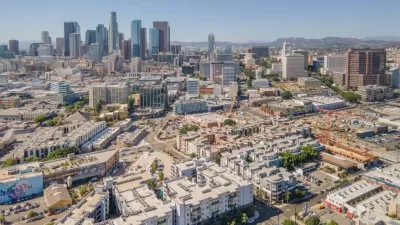
Prospects for Zoning Reform
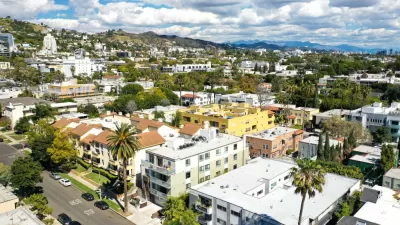
Controlling Rents
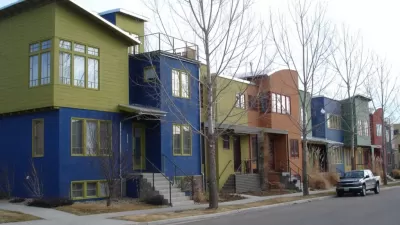
Missing Middle Housing: Meeting the Growing Demand for Walkable Urbanism

Alabama: Trump Terminates Settlements for Black Communities Harmed By Raw Sewage
Trump deemed the landmark civil rights agreement “illegal DEI and environmental justice policy.”

Planetizen Federal Action Tracker
A weekly monitor of how Trump’s orders and actions are impacting planners and planning in America.

The 120 Year Old Tiny Home Villages That Sheltered San Francisco’s Earthquake Refugees
More than a century ago, San Francisco mobilized to house thousands of residents displaced by the 1906 earthquake. Could their strategy offer a model for the present?

Opinion: California’s SB 79 Would Improve Housing Affordability and Transit Access
A proposed bill would legalize transit-oriented development statewide.

Record Temperatures Prompt Push for Environmental Justice Bills
Nevada legislators are proposing laws that would mandate heat mitigation measures to protect residents from the impacts of extreme heat.

Downtown Pittsburgh Set to Gain 1,300 New Housing Units
Pittsburgh’s office buildings, many of which date back to the early 20th century, are prime candidates for conversion to housing.
Urban Design for Planners 1: Software Tools
This six-course series explores essential urban design concepts using open source software and equips planners with the tools they need to participate fully in the urban design process.
Planning for Universal Design
Learn the tools for implementing Universal Design in planning regulations.
Clanton & Associates, Inc.
Jessamine County Fiscal Court
Institute for Housing and Urban Development Studies (IHS)
City of Grandview
Harvard GSD Executive Education
Toledo-Lucas County Plan Commissions
Salt Lake City
NYU Wagner Graduate School of Public Service


























